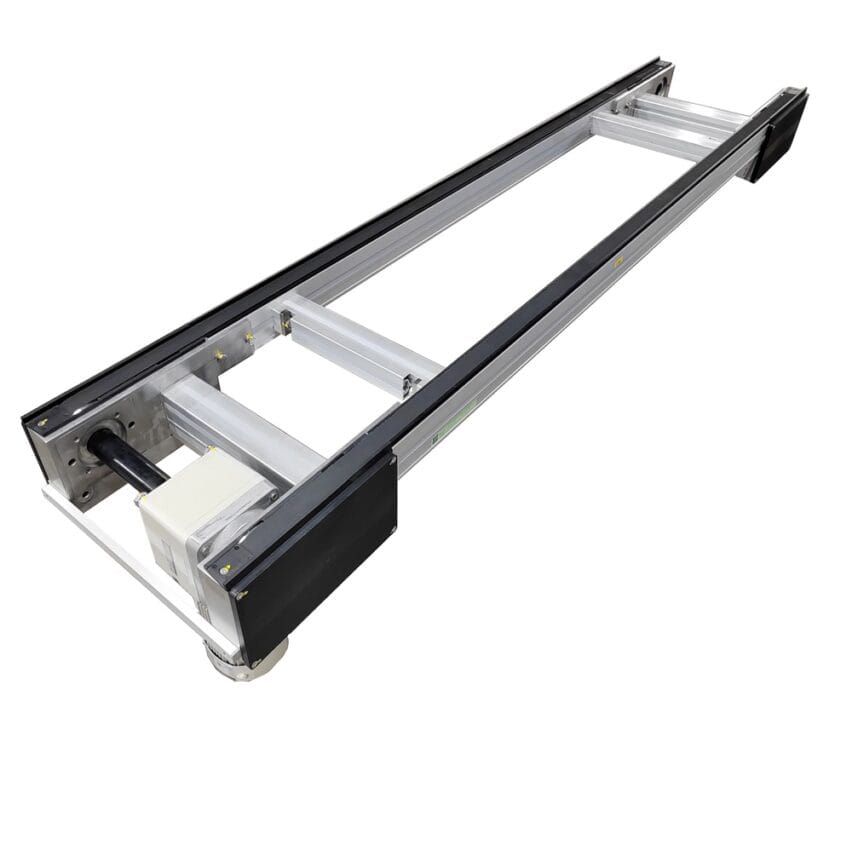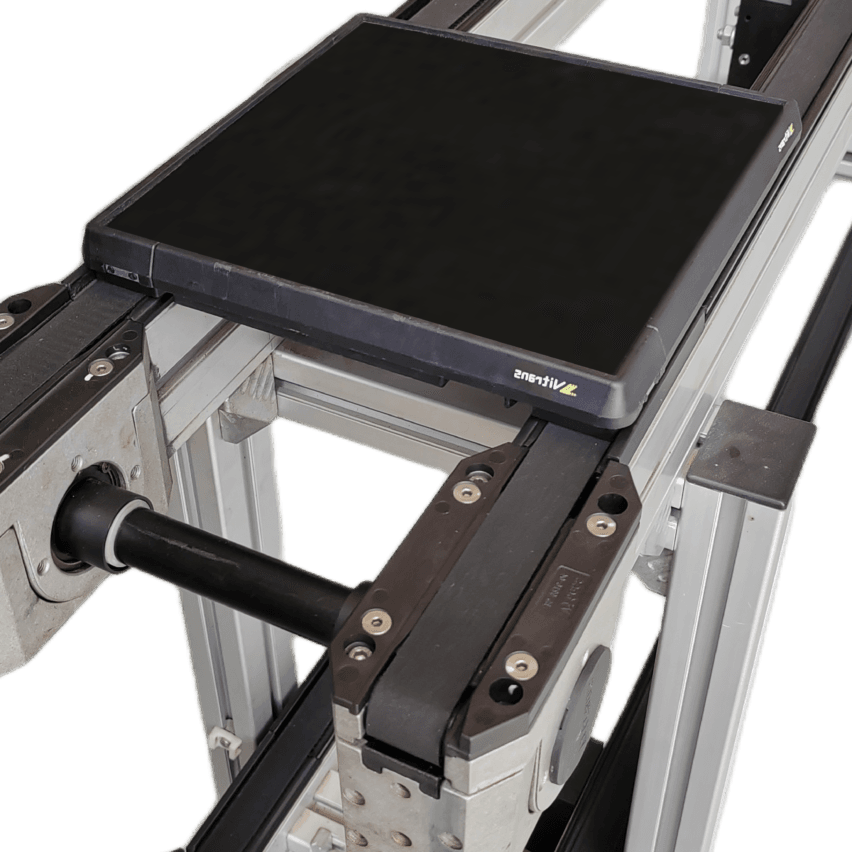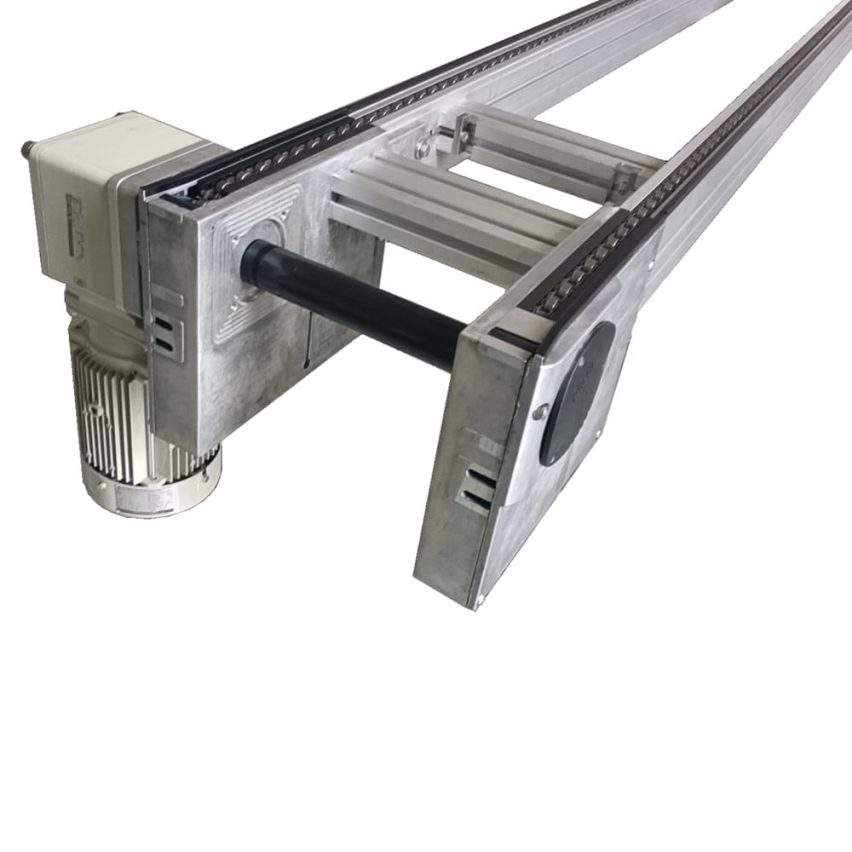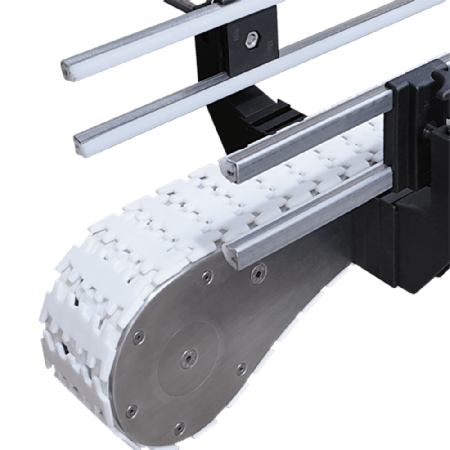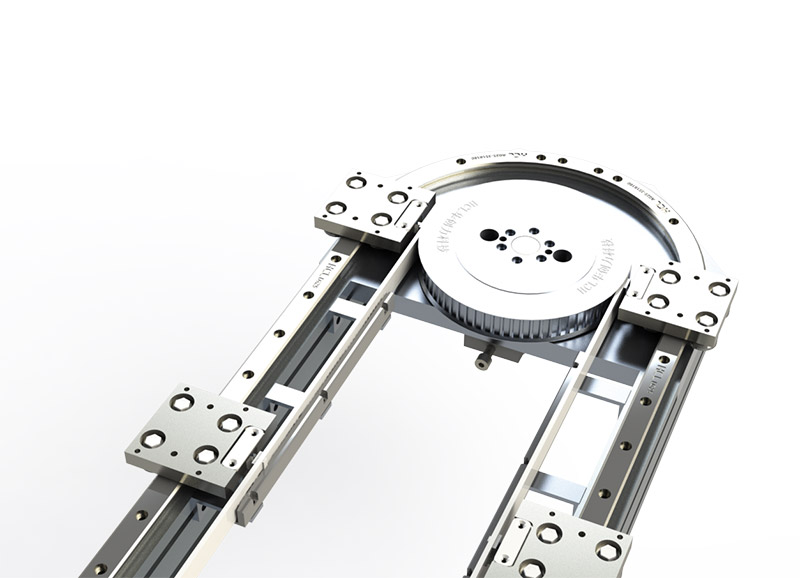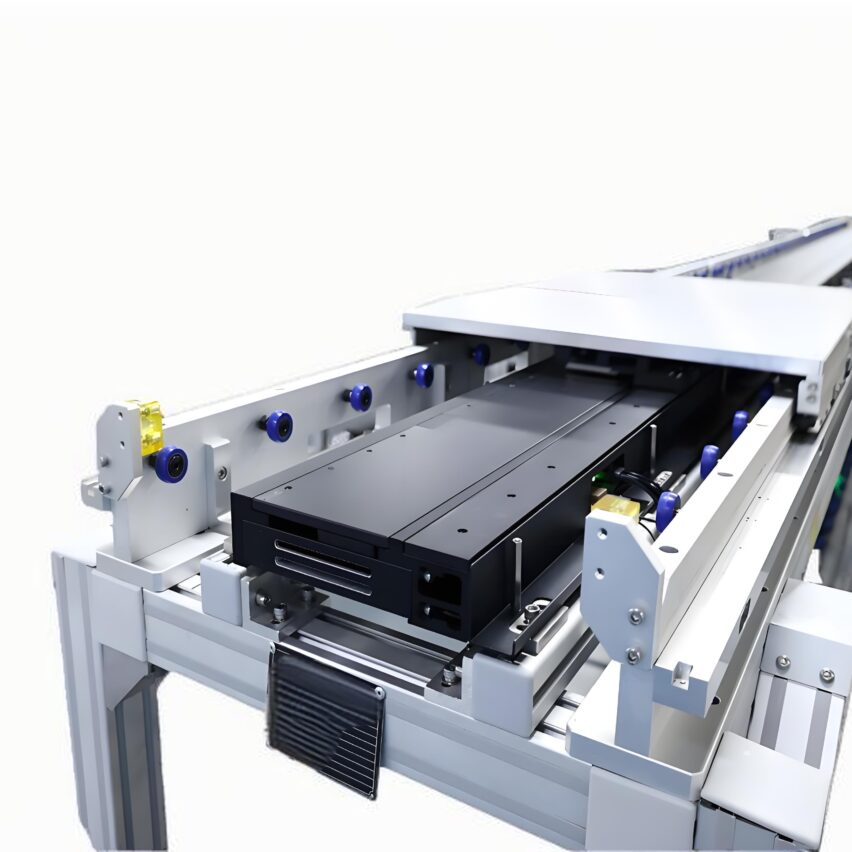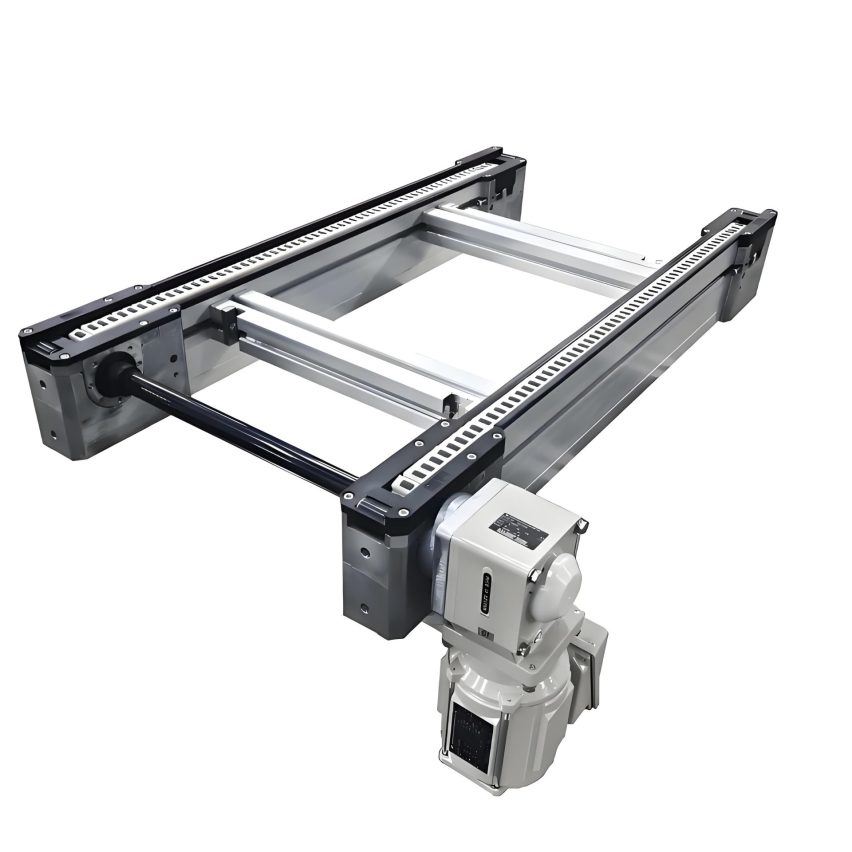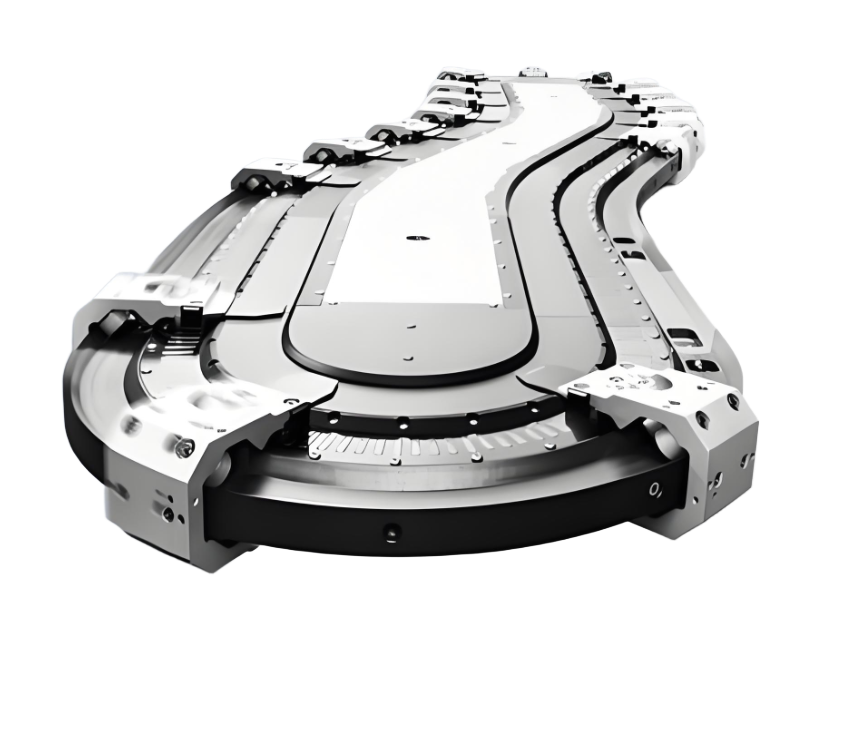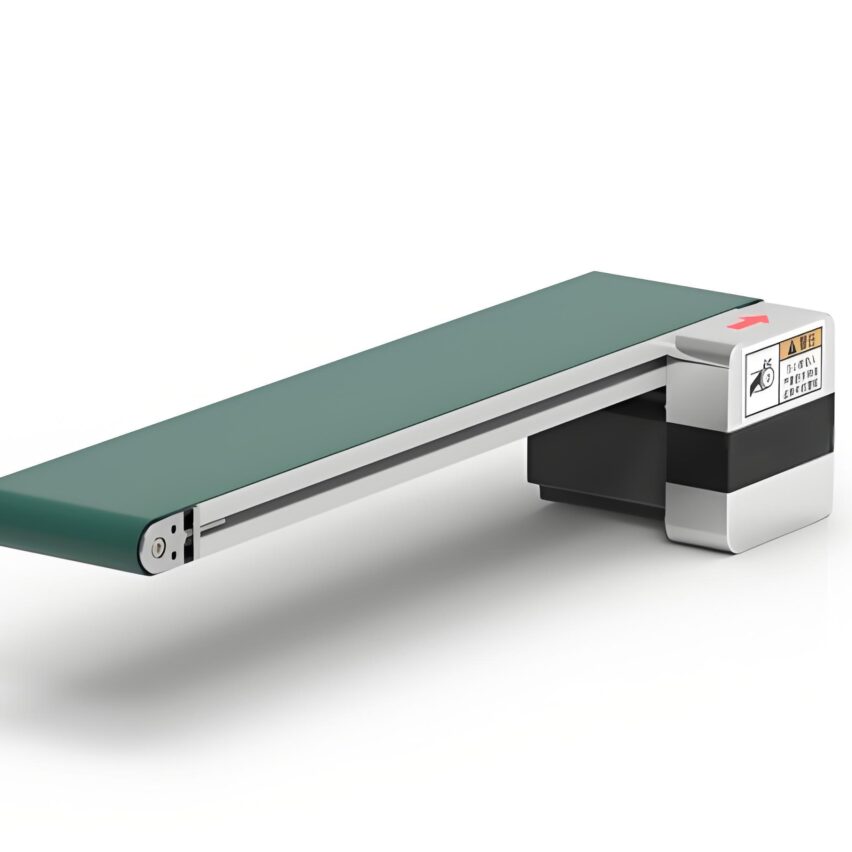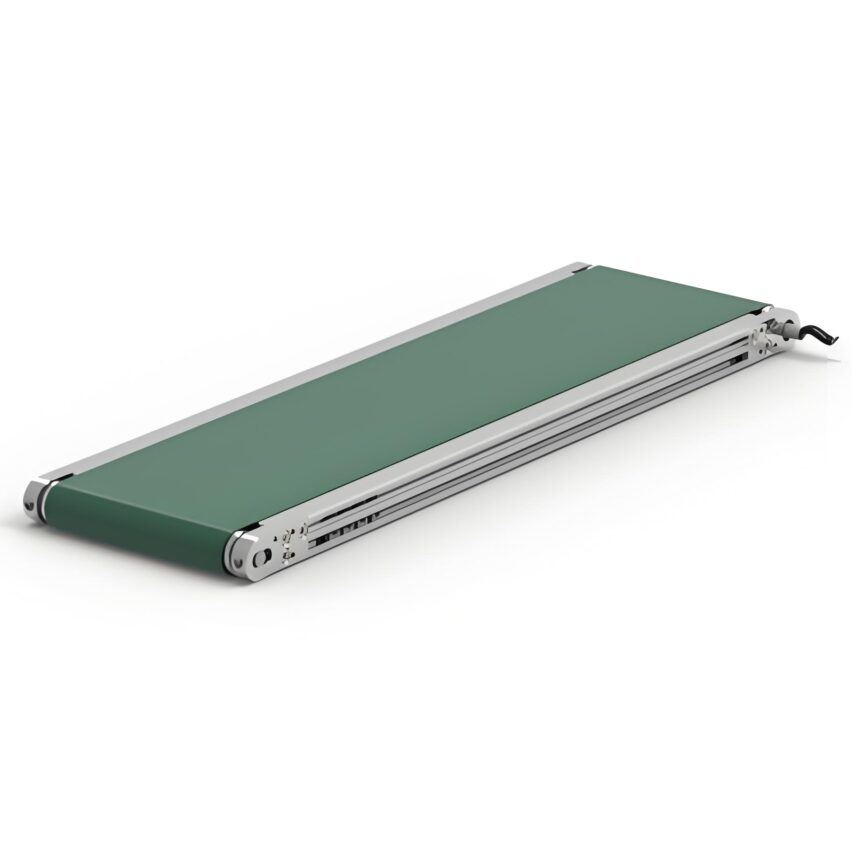Physical levers: the mechanical code for speed jumps
The central mystery of the triple speed chain isDesign of roller to roller diameter ratio. When the chain is running at speed V₀, the roller (diameter d) rolls on the guide rail, driving the upper roller (diameter D) to rotate. According to the principle of superposition of motion:
Workpiece speed V = V₀ × (1 + D/d)
If the roller diameter is set to 2 times the roller (D = 2d), the work plate is to obtain the chain speed 3 times the conveying efficiency. This kind ofPurely mechanical differential constructionNo additional energy is required and efficient conveying is achieved only by geometry optimisation.
The practical application of a new energy battery factory confirms its value: the work plate carrying 500kg battery modules flows at 9m/min, while the chain itself runs at only 3m/min, reducing the chain wear rate by 60%.
Structural evolution: from single conveyor to intelligent synergy
Modern triplex chains have evolvedModular Integrated SystemsIts technological breakthroughs are embodied in four key components:
- Composite material chain
- Light duty scenario: engineering plastic rollers (nylon/polyurethane) anti-static, suitable for electronic assembly
- Heavy-duty scenario: Hardened alloy steel chain with a single point load capacity of up to 3.5 tonnes, resistant to impacts from automotive components
- Dynamic positioning unit
- Pneumatic stopper for ±2.5mm coarse positioning
- Integrated magnetic encoder increases accuracy to ±0.1mm for precision assembly
- Intelligent Drive Architecture
- Segmented independent inverter motors (configured every 20 metres), adapting to differences in process rhythms.
- Schneider ATV630 inverter achieves braking energy feedback, power saving rate of 15%
- Environmentally Adaptive Design
- Medical grade stainless steel chain resistant to 130°C steam sterilisation
- Chemical scene with 316L stainless steel corrosion resistance, life enhancement 20%
Industry empowerment: from efficiency tool to strategic asset
In the Changzhou home appliance factory, the triple-speed chain and the robotic arm work together to complete the assembly of the air conditioning compressor: when the work plate is accurately positioned by the blocker, the robotic arm completes the installation within an error of 0.3 seconds. This kind ofFree beat + fixed point controlcharacteristics that make it a flexible pillar of the three industries:
- Consumer electronics manufacturing
Anti-static roller (resistance value 10⁶Ω) protects the flow of motherboard, Shenzhen printer factory achieves daily capacity of 2000 units↑67% - New Energy Heavy Duty Transport
Carbon steel chain + bearing rollers to carry the battery module, welding line is resistant to high temperature 600℃. - Pharmaceutical aseptic production line
Modular stainless steel frame supports quick disassembly for cleaning and meets GMP certification standards
Technical Dilemma: Three Barriers to Intelligent Upgrading
Most of the current triplex chains are still trapped in the basic functions, exposing the fatal shortcomings that constrain intelligent manufacturing:
- Data blackboxing
Lack of chain health monitoring in Suzhou electronics factory caused a 4-hour shutdown of the whole line due to the failure of a stuck chain, resulting in a loss of more than a million dollars - scalability yoke
Conventional aluminium profile guide rails do not have reserved sensor interfaces, retrofitting machine vision requires cutting modifications - Flexible ceilings
Sequential curing of work stations, switching product types requires manual adjustment of the stopper, which can take up to 2 hours/time.
direction of breaking (i.e. where to break the ice): Leading companies break out through triple change
- Neuralisation: Pressure sensors are implanted in the tensioning mechanism for real-time warning of overload risks.
- plug-and-play architecture: 127 x 100 mm electrophoretic aluminium rail with integrated T-slots on the side, 5-minute installation of photoelectric switches
- dynamic caching technique: Double-layer line body design, automatically transferring the workpiece board to the bottom staging area in case of failure.
Forward-looking genes: laying the evolutionary groundwork for the future
Based on the in-depth analysis of 100 factory transformation cases, I believe that the next generation of triple speed chain needs to be implanted with four major evolutionary genes:
- Hardware redundancy design
When the current load is 500kg, it is selected according to the standard of 800kg to avoid the whole replacement when the production line is upgraded. - Neural interface pre-built
Profinet industrial Ethernet interface reserved every 10 metres, compatible with AGV dispatching system - Space resilience planning
Both ends of the line are reserved for 3-5 metres of extension to support the addition of inspection stations. - Full Life Cycle Cost Control
Quick-release chain link reduces maintenance time by 70%, and energy-feedback inverter recovers retrofit costs in three years
case in pointA lithium battery factory adopts the forward-looking design of triple-speed chain, although the initial cost increased by 12%, but within three years, the transformation cost reduced by 47% and the capacity increased by 31%, which verifies that theRedundancy by design means long-term gainThe Iron Law of.
Self-questioning: penetrating the technological fog
Why does the chain continue to run when the work plate is stationary?
When the blocker intercepts the work plate, the chain rollers continue to move forward, and the rollers and rollers produce africtional slipThis will cause the rollers to idle. At this time the work plate locks and the chain circulates endlessly, forming "Dynamic Chain Static Plate"The Unique Mechanical Phenomenon.
The core advantage of triplex chains over twofold chains?
- Speed Redundancy: 8 m/s peak speed support for dynamic speed regulation
- Strength reserveHeavy-duty structure with 1000kg load capacity, can be retrofitted with intelligent modules such as visual inspection.
- Accuracy potential: ±0.1mm positioning accuracy to meet the needs of precision assembly substrate
What are the most overlooked O&M risks?
Metal chip intrusionIt's the invisible killer. Chain breakage triggered by a dropped screw jamming a roller in a motor factory. It is important to implementNissen Double Check: Pre-shift magnetic tool to vacuum chips, post-shift air gun to clean tracks, weekly open lid deep cleaning.
Exclusive insights: According to 2025 industry data, the integrated benefits of the forward-designed Smart Triplex Chain exceed those of traditional solutions by 230% over a 10-year cycle.As manufacturing moves into the era of low-volume customisation, theevolvabilityIt has become a core indicator of production line design - every interface reserved today is a moat for tomorrow's competitiveness.

